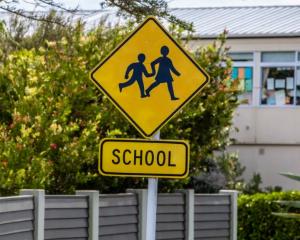
Prof Michael Plank, of the University of Canterbury, has, along with other researchers, been working long hours helping model how Covid-19 might spread in New Zealand.
He says New Zealanders should expect case numbers to continue to decrease when the country moves to level 3 next week, all be it at a slower rate.
However, there was still a possibility of a significant outbreak and New Zealanders should be prepared for a situation where the Government decides to move up alert levels.
He answers questions from Otago Daily Times online editor Vaughan Elder.
1. What does the modelling you are working on show about how many cases we can expect from now on?
We can expect the numbers of cases to continue to drop over the next couple of weeks, but more gradually than they have been. There will also be some ups and downs in the numbers depending on which day cases get reported.
2. What does the modelling show about how many cases we can expect at level 3 versus if we stayed at level 4 for longer?
That really depends on how effective level 3 is at restricting contact between people. If level 3 is effective and keeps the reproduction number under 1, we won’t see a huge difference between levels. But if the reproduction creeps above 1, we will eventually start to see cases increase.
3. Is the move to level 3 supported by your modelling?
Our modelling only looks at the risk of the virus spreading again at level 3 and the potential health effects of that. The decision to move to level 3 is based on a broader set of variables, including the impact of the lockdown on people's mental, physical and financial wellbeing. Overall, I think it’s a reasonable compromise to extend level 4 until April 28.
4. Are there likely undetected cases out there and if so does your modelling have anything to say about how many there might be?
It’s likely there are some undetected cases still out there although we’re confident they are on the way down. But as we’ve seen, it only takes one case to potentially cause a large cluster. That’s why it’s really important we all keep up the good work of staying home over the next week.
5. Your modelling talks about elimination as an aim, what is the definition of elimination?
A good definition would be that there are no active cases circulating in the community, i.e. any remaining cases are strictly quarantined. However, we should recognise that elimination is not an end-goal in itself, but a stepping stone to a longer-term plan. If we do achieve elimination, border reincursions are inevitable and we need an intensive surveillance plan and contact-tracing system to stamp those out when they appear. We need a plan for managing relationships with other countries that have Covid-19, including trade. And we need to be prepared for the possibility of having to go back to alert level 3 or 4 if there is a significant outbreak.
6. How could modelling inform the Government's next moves?
Modelling will help inform the Government’s next big decision about when and how to change the alert level. The Prime Minister said yesterday this will be reviewed on May 11. The model will help us estimate the probability that the virus has been eliminated at this stage. It’s possible we will need a longer period of time at level 3 to be confident of elimination.
7. Is NZ performing better than predicted by your modelling and what can we read from that?
The fall in case numbers over the past 2-3 weeks was faster than the model initially predicted. This shows that our level 4 restrictions and our contact tracing system have been really effective in reducing transmission.
8. Moving into level 3 at what point should we be alarmed in terms of numbers of new cases?
It’s important to remember there is a lag time between getting infected and cases being tested positive and reported. So we potentially won’t know about cases that get infected as we move into level 3 until 1-2 weeks later. Only after this will we know whether level 3 is effective in containing the virus. If we start to see new clusters and community transmission taking off, we may need to consider going back up to level 4.
9. What are the increased risks of level 3?
The main risk is that contacts between people could allow the virus to spread again, for example at newly reopened businesses or schools. So it’s important to remember level 3 does not mean “back to normal”. We still need to limit ourselves to essential activity only and minimise contact with anyone outside your bubble.












